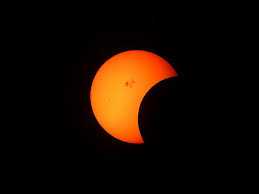Solar eclipse will be witnessed on February 15, 2018. This eclipse will not be a total Solar eclipse instead it will be partial Solar eclipse. A Solar eclipse never comes alone, it usually comes with after one or two-week of Lunar Eclipse. Solar Eclipse is caused when Moon comes between Earth and Sun. Solar Eclipse usually takes place after eighteen months. This Partial Solar eclipse will be visible in southern South America, including many locations in Argentina, Chile, Paraguay, and Uruguay, and in Antarctica. The eclipse starts at one location and ends at another peak.
First location’s time to witness the eclipse will be February 15, 18:55 UTC. Maximum eclipse will be witnessed at February 15, 20:51 UTC. The last location to witness the partial Solar eclipse timing is 22:47 UTC. These time refer to the beginning of the eclipse and to the maximum peak timing it will take. A solar eclipse never comes alone instead it usually comes with lunar eclipse either one or two-week before the eclipse. The February eclipse will be magnitude 0.599 at its maximum. Eclipse magnitude is what fraction of the sun’s diameter is covered by the moon. Looking directly at the Sun can damage the eyes.
During the Solar eclipse, pregnant women are not allowed to go out of the house as the harmful rays of the Sun can damage the foetus. During the Solar eclipse, one must not use harmful things such as Knife, scissors. Solar eclipse can have harmful effects on the body of the person. Though it is a partial Solar eclipse but the effects will be same as the Total Solar eclipse. It is advised that one must meditate and should worship God. Solar Eclipse will be a partial type this month.


Leave a Comment